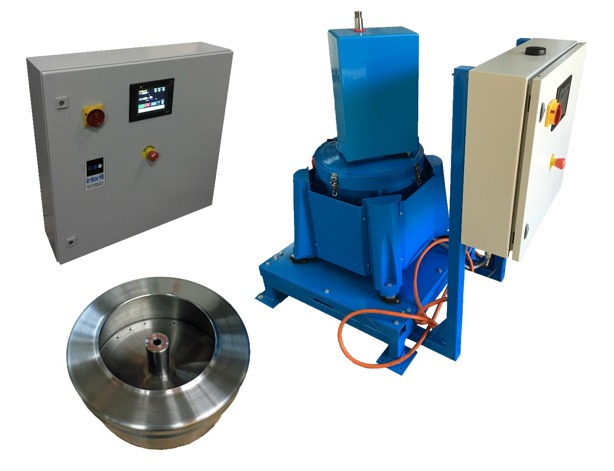
Centrifuges have come a long way from the original hand-crank version that was introduced more than a century ago. Today’s centrifugal machines – which are utilized in hundreds of industries – have been developed to provide better purification, faster processing and longer lifespans.
One area in which the technology has seen rapid growth: Laboratory centrifugal equipment. Innovative medical research requires machines that provide precise purification, isolating substances at the molecular level. That’s one reason why ultracentrifuge and microcentrifuges have seen some of the fastest innovations in the last decade.
Yet, not all centrifuge advances involve the latest technology.
Take, for instance, a paper “centrifuge” recently developed by Stanford University students. The toy-like device – which costs less than a dollar to produce – can reach 125,000 rpm and exert up to 30,000 Gs of force. What’s shocking: Machines that cost $5,000 achieve similar results.
This is just one example. Researchers continue to develop state-of-the-art centrifuges for a variety of industries, including wastewater treatment, oil refining, and food processing. These new machines are providing better performance; they’re more cost effective, and they require less maintenance.
Over the next five years, the global industrial centrifuge market is expected to grow rapidly, and this rapid growth will continue to fuel the development of new centrifugal technologies. Now, many emerging centrifuge technologies are on the horizon.

Image Source: interfil.com.au
What’s Driving Innovation in New Centrifuge Technology?
Technological advances in centrifugation are driven in three ways: Economics improved performance, and emerging uses. Here’s a closer look:
- Improving Performance: Nearly all industries that utilise centrifugation are continually looking to improve performance. In wastewater treatment, for example, increasing centrate purity and cake solid is a major concern, and the latest machines improve outputs greatly. Also, the latest centrifuges are designed to conserve water and energy, which helps to reduce operating costs.
- Economics: Reduced costs are another promise of new centrifugation technologies. Centrifuges that are easy to use and maintain reduce workforce costs, and improved performance reduces operating costs. Wastewater treatment and oil refining centrifuges also produce drier waste cakes, which in turn, reduce disposal costs.
- New Uses: Centrifuges are constantly adapted for new uses. For example, many brewers have begun to utilise centrifuges over traditional filtration systems due to improved performance. Additionally, new research methods also continue to advance the need for improved laboratory centrifuge technologies.
Advances in Centrifugal Technology
Over the last decade, major innovations in centrifugal technology have changed how wastewater, oils and biomedical samples are processed. In particular, machines are smaller, built with higher-strength materials, they weigh less, and they have greater capacities.
New Materials
In recent years, many manufacturers have begun utilising carbon fibre composites to produce centrifuge rotors. Compared to traditional metal rotors, carbon fibre is stronger, enabling rotors to withstand higher pressure and the most demanding applications. For example, aluminium rotors can stretch during centrifugation, which is called “elongation.” Overtime, this stress on the material can compromise the structural integrity of the rotor.
Lighter Machines
The introduction of carbon fibre rotors also has enables machines to be lighter. Traditional aluminium rotors weigh up to 30kg or more in most floor standing centrifuges. This has made it difficult to move the machine. Carbon fibre rotors, in effect, can cut weights in half, while improving overall strength. Carbon fibre is also more resistant to corrosion, which is the most common cause of rotor failure.
Smaller Footprints, Larger Volumes
Whether in the lab or an industrial facility, operators are demanding machines with smaller footprints – which machines that take up less space. In recent years, centrifuges have reached the market that can handle the same volumes as larger, older machines. At the same time, machines are being developed with massive volumes. The Z8E, for example, the world’s largest decanter centrifuge can achieve 24,000 Newton metres of torque.
Ultimately, it’s an exciting time for centrifuge technology. Laboratory centrifuges are getting smaller and faster – while maximising volumes – and industrial centrifuges have greatly reduced operating costs and performance. This is just the beginning. Over the next decade, the need for innovative solutions will continue to fuel technological advancements.
Read Also:



